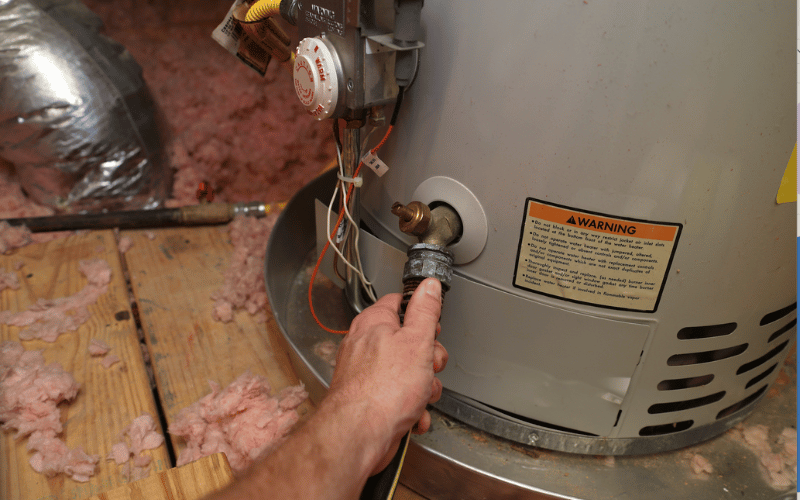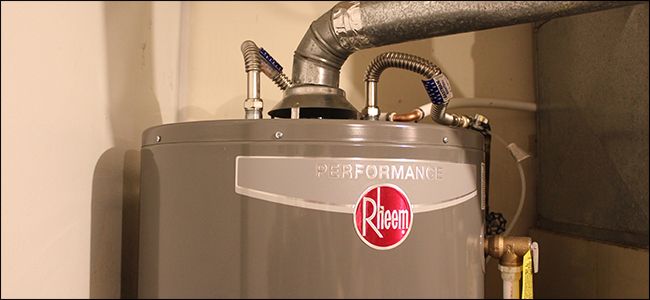We've discovered this great article relating to Tips For Maintaining Your Hot Water Heater directly below on the internet and reckoned it made good sense to relate it with you in this article.

Warm water is important for day-to-day comfort, whether it's for a revitalizing shower or cleaning dishes. To ensure your warm water system runs successfully and lasts longer, normal maintenance is crucial. This short article supplies practical suggestions and understandings on just how to maintain your home's warm water system to stay clear of disruptions and pricey fixings.
Intro
Preserving your home's warm water system might appear daunting, yet with a few simple steps, you can guarantee it runs smoothly for several years ahead. This guide covers whatever from understanding your warm water system to do it yourself upkeep suggestions and knowing when to call professional assistance.
Relevance of Preserving Your Hot Water System
Normal upkeep not only expands the lifespan of your warm water system however likewise ensures it operates efficiently. Overlooking maintenance can lead to lowered efficiency, higher energy costs, and also premature failing of the system.
Indications Your Warm Water System Requirements Maintenance
Knowing when your warm water system requires interest can prevent major issues. Watch out for indications such as inconsistent water temperature level, strange sounds from the heating system, or rustic water.
Flushing the Water Heater
Purging your hot water heater gets rid of sediment build-up, enhancing effectiveness and prolonging its life.
Monitoring and Replacing Anode Rods
Anode rods protect against deterioration inside the container. Examining and replacing them when broken is critical.
Facility Problems Requiring Professional Help
Instances include significant leaks, electric issues, or if your water heater is consistently underperforming.
Regular Expert Upkeep Benefits
Specialist maintenance can consist of thorough evaluations, tune-ups, and ensuring conformity with safety and security criteria.
Examining and Adjusting Temperature Settings
Changing the temperature settings ensures ideal performance and security.
Do It Yourself Tips for Maintenance
You can execute several upkeep tasks on your own to maintain your hot water system in leading condition.
Checking for Leakages
Frequently evaluate pipelines and links for leakages, as these can bring about water damages and greater costs.
Understanding Your Warm Water System
Prior to diving into maintenance tasks, it's useful to recognize the basic components of your warm water system. Generally, this includes the water heater itself, pipelines, anode rods, and temperature controls.
Monthly Maintenance Tasks
Routine regular monthly checks can help catch small problems prior to they intensify.
Evaluating Stress Relief Valves
Examining the pressure safety valve guarantees it functions correctly and protects against too much stress build-up.
Insulating Pipelines
Insulating hot water pipelines reduces warmth loss and can save power.
When to Call a Professional
While do it yourself upkeep is beneficial, some issues need expert proficiency.
Verdict
Routine maintenance of your home's warm water system is essential for performance, long life, and price financial savings. By following these pointers and knowing when to seek specialist aid, you can guarantee a dependable supply of warm water without unexpected disruptions.
Water Heater Maintenance: The Basics
Maintaining your water heater will ensure it operates efficiently and has a longer lifespan. Neglecting regular maintenance can lead to costly repairs and an even bigger chunk of your savings if you have to replace it sooner than necessary. But there’s good news: Most water heater maintenance tasks are relatively simple and easy for homeowners with basic DIY skills.
Flush the Water Heater
Over time, sediment and minerals can build up in the tank, reducing its efficiency and potentially causing damage. To flush the tank, turn off the power or gas supply, attach a hose to the drain valve near the bottom and open the valve to drain the water until it runs clear. Ideally, flush the tank annually.
Replace the Anode Rod
The anode rod is a sacrificial metal rod that helps prevent corrosion inside the tank. Inspect and replace it every three to five years or per the manufacturer's recommendation. To replace the anode rod, turn off the power or gas supply, drain a few gallons of water from the tank, unscrew the old rod and replace it with a new one. If the anode rod is significantly corroded or covered in calcium buildup, it's a sign the water heater may need to be replaced soon.
Tune-Up
A yearly tune-up can help identify potential issues and ensure your water heater operates at peak efficiency. This typically involves checking the thermostat, burner assembly (for gas heaters) and any other components specified by the manufacturer. During a tune-up, the technician may also clean the burner and adjust the pilot light (for gas heaters) or examine the heating elements (for electric heaters).
How to Maintain Your Water Heater
Insulate the tank. Insulating the tank can improve energy efficiency and reduce heat loss, saving you money on energy bills. You can purchase precut insulation blankets designed specifically for water heaters or use standard fiberglass insulation wrapped securely around the tank. Check the temperature. The recommended water temperature for most households is around 120 degrees Fahrenheit (49 degrees Celsius). Higher temperatures can increase energy costs and potentially cause scalding. Use a kitchen thermometer to check the temperature at the faucet nearest the water heater. Monitor water pressure. Excessive water pressure can strain the water heater and cause leaks or even tank failure. Install a pressure-reducing valve if necessary. The ideal water pressure range is between 60 and 70 PSI (pounds per square inch). Test the temperature and pressure (T&P) relief valve. The T&P relief valve is a safety feature that releases pressure if the tank gets too hot or the pressure builds up too high. Test it annually by lifting the lever and allowing a small amount of water to release. Replace the valve if it doesn't release water or reseal properly. Check for leaks. Regularly inspect the tank, pipes and fittings for leaks or corrosion. Deal with issues promptly to prevent further damage. Even a small leak can lead to significant water damage over time. Consider a tankless water heater. If your traditional tank-style water heater is nearing the end of its lifespan ( typically 10 years), consider replacing it with a tankless water heater. These units heat water on demand, reducing standby energy losses and potentially saving you money on your energy bills. Schedule professional maintenance. While homeowners can perform many water heater maintenance tasks, it's still a good idea to schedule professional maintenance every few years. A plumber or HVAC technician can thoroughly inspect the unit, identify potential issues and ensure it operates safely and efficiently. https://www.homeserve.com/en-us/blog/home-improvement/hot-water-heater-maintanence/

We had been shown that write-up on How to Maintain a Hot Water Heater in a Few Simple Steps through a pal on our other domain. Do you know about anybody else who is interested in the topic? Do not hesitate to share it. We take joy in your readership.
Click Here